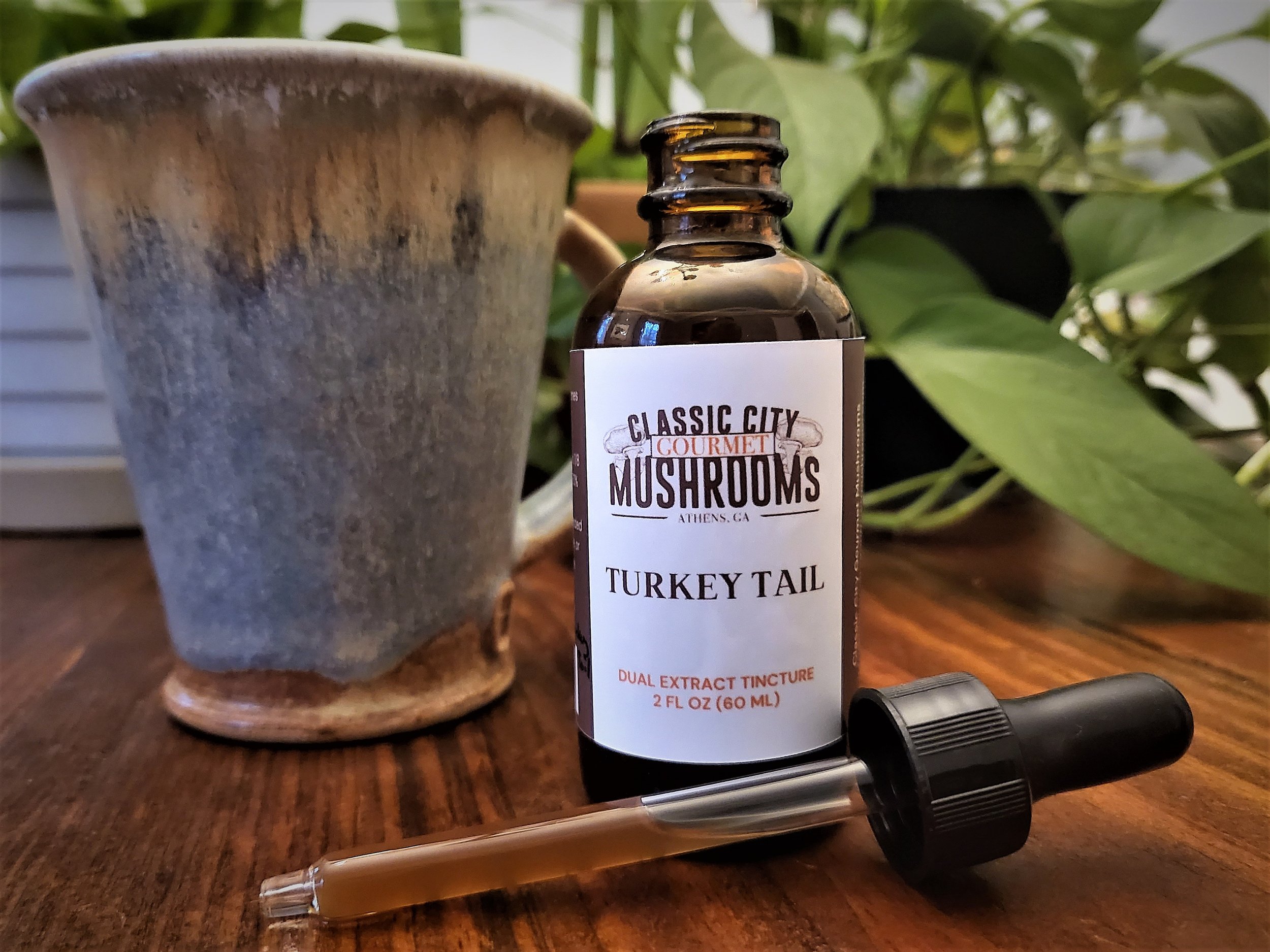Turkey Tail Mushrooms
Trametes Versicolor
Turkey tail mushrooms get their name from their shape and distinctive coloring. They are extremely common and can be found on almost every continent. They also fruit on a variety of woods. Turkey tails have alternating color bands and velvety new growth on the upper surface and white pores underneath that make them easily identifiable. Color banding is related to the nutrients available to the growing mushrooms.
Turkey tails are not considered a great edible mushroom. They have a papery or leathery texture and a bitter flavor. The fruitbodies are prized for their medicinal properties. Studies have shown that these mushrooms can help boost and modulate immune system function, regulate blood pressure and sugar levels, lower cholesterol, and provide cardiovascular and digestive support. They contain antiviral and antibacterial properties as well as anti-inflammatory compounds, and they also have been shown to suppress many cancer cell lines.
References
Chu, K. K., Ho, S. S., & Chow, A. H. (2002). Coriolus versicolor: a medicinal mushroom with promising immunotherapeutic values. The Journal of Clinical Pharmacology, 42(9), 976-984.
Cotter, T. (2014). Organic mushroom farming and mycoremediation: Simple to advanced and experimental techniques for indoor and outdoor cultivation. Chelsea Green Publishing.
Hobbs, C. (2004). Medicinal value of turkey tail fungus Trametes versicolor (L.: Fr.) Pilát (Aphyllophoromycetideae). A literature review. International Journal of Medicinal Mushrooms, 6(3).
Janjušević, L., Karaman, M., Šibul, F., Tommonaro, G., Iodice, C., Jakovljević, D., & Pejin, B. (2017). The lignicolous fungus Trametes versicolor (L.) Lloyd (1920): a promising natural source of antiradical and AChE inhibitory agents. Journal of enzyme inhibition and medicinal chemistry, 32(1), 355-362.


